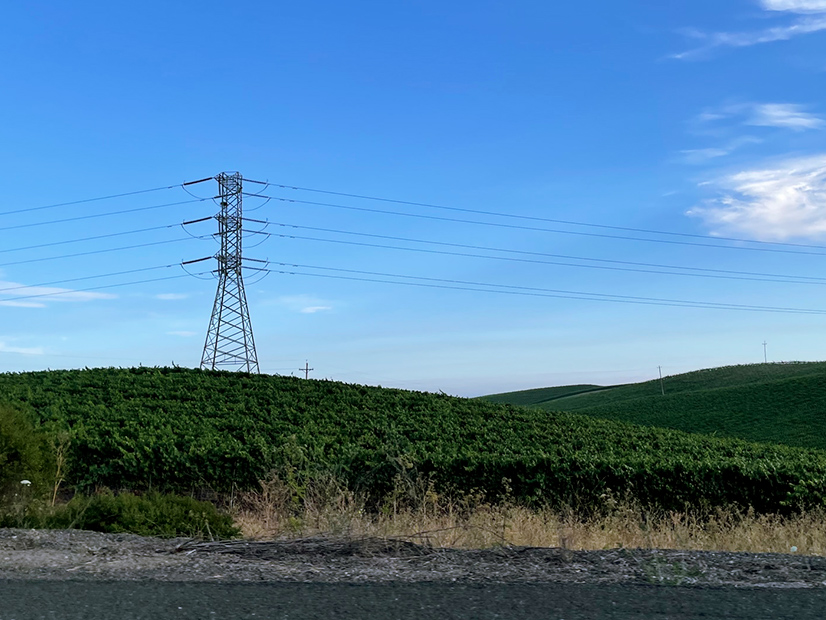
CAISO declared an EEA watch for a second straight day, citing “uncertainty” about energy supply and load forecasts, transmission constraints and high electricity demand in the Western U.S.
CAISO declared an energy emergency alert (EEA) watch for a second straight day Wednesday, citing “uncertainty” about energy supply and load forecasts, transmission constraints and high electricity demand in the Western U.S.
Wednesday’s announcement came on a day when system load was expected to peak at a relatively modest 42,659 MW, while CAISO’s neighbors in the desert southwest continue to swelter in a record-setting heat wave. The ISO said the watch would remain in effect from 6 to 10 p.m. PT.
“CAISO analysis shows that all available resources are committed or forecasted to be in use, for the specified time period, and there is potential for an energy deficiency,” the ISO said in a notice posted Wednesday afternoon. “Entities are encouraged to offer available energy and ancillary service bids, [and] participating customers may be directed by utilities to use generators approved for emergencies, or to reduce load according to the protocols of each utility’s program.”
The ISO declined to comment beyond a press release it issued Wednesday afternoon and did not specify the location of the transmission constraints mentioned in its notice.
“No further emergency declarations are planned at this time, but if grid conditions worsen, the ISO could declare an EEA 1, 2 or 3,” the release said.
A source familiar with Western grid operations, but who is not authorized to speak on behalf of their company, said there has been “lots of speculation” among industry participants about what is causing the ISO to issue the alerts, but “nothing conclusive or pointing to a single issue.”
“It’s worrying, particularly since [CAISO] said they were good and had good water this year,” the source said.
An EEA watch represents a preliminary step before the ISO declares an actual emergency, which will range from calls for conservation measures and demand response under an EEA 1 to a need for rotating blackouts under an EEA 3.
CAISO declared its first EEA 1 of the summer last week, when it confronted a shortfall of ramping resources needed to firm up the grid as solar output rolled off the system during the evening of July 20. The ISO that day was forced to ask for conservation and invoke DR despite moderate summer loads and normal temperatures in California’s major population centers.
A CAISO spokesperson told RTO Insider after the event that the grid operator would make “adjustments going into the next peak hours” to account for the forecasting issues leading to the emergency. (See Ramping Shortfall Sparks CAISO’s 1st Summer Emergency.)
But Wednesday’s EEA watch, which followed another such watch issued Tuesday evening, signals that CAISO could be struggling to manage moving parts that are creating operational uncertainty even under conditions that should translate into smooth grid operations — such as abundant hydro in the system and a record-breaking 5,600 MW of battery resources to assist with evening ramps.
Tuesday’s watch, which lasted from 7:26 to 11:59 p.m., occurred on a day when CAISO’s load peaked at 43,386 MW at 6:30 p.m., compared with a day-ahead peak forecast of 42,421 MW. But by 7:45 p.m., as solar came off the system, net load was peaking at 38,564 MW, more than 1,800 MW above the day-ahead forecast for that interval. Net load continued to outpace day-ahead forecasts into the night, at one point by as much as 2,923 MW.
At the same time, according to CAISO daily reports on curtailed and non-operational generators, the ISO was dealing with a sharp increase in forced outages, which jumped from 10,436 MW on Monday morning to 11,721 MW on Tuesday morning. Next-day generation summaries for Tuesday showed that a few key resources with ramping capability also were curtailed in the late afternoon and early evening, including 407 MW from Pacific Gas and Electric’s Helms pumped storage plant because of transmission constraints and about 300 MW from Calpine’s gas-fired Los Medanos facility because of “plant trouble.”
The ISO reports also showed San Diego Gas & Electric’s gas-fired Palomar Energy Center returned to service about 6 p.m. Tuesday after a four-day outage, only to be quickly shut down, taking its 588 MW back out of the system just ahead of the evening ramp.
Wednesday’s morning outage report showed 11,605 MW of curtailments across the ISO, down slightly from Tuesday. CAISO’s day-ahead forecast for Thursday estimates load will peak at about 42,000 MW.



